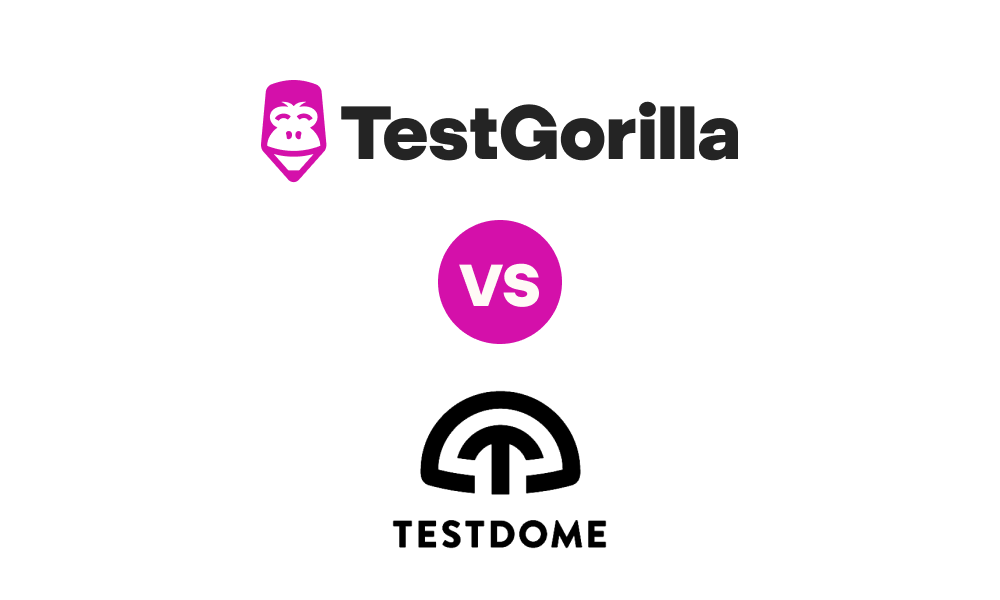Embedded systems help many modern devices and applications function. These include everything from simple household appliances like microwaves to more complex systems like automotive control systems.
Embedded systems engineers design and develop embedded systems and must be proficient in software and hardware integration. An engineer lacking expertise in either one can cause system instability or failure. They might choose inappropriate microcontrollers or processors that don't meet the system's power, performance, or cost requirements, leading to over- or under-engineered solutions.
But how do you avoid hiring an unqualified candidate for your embedded systems engineer role? It starts with writing a great job description.
Defining the responsibilities and requirements for this role can be tough, as every embedded systems position can be quite different from the next. That’s why we’re here to help with this guide on crafting the perfect embedded systems engineer job description.
Table of contents
- What is an embedded systems engineer?
- Key skills to look for in an embedded systems engineer
- How to write an effective embedded systems engineer job description
- Embedded systems engineer job description template
- 3 things to avoid when writing a job description for a embedded systems engineer
- Next steps: Attracting and assessing embedded systems engineer candidates
- FAQs
- TestGorilla helps you hire top embedded systems engineers
What is an embedded systems engineer?
An embedded systems engineer is a professional who designs, develops, and maintains software and hardware for embedded systems. These are computer systems integrated into other devices or products, such as smartphones, automobiles, medical equipment, and other devices.
Embedded systems engineers combine expertise in programming, electronics, and real-time systems to create efficient and reliable solutions tailored to specific applications.
Key skills to look for in an embedded systems engineer
When hiring an embedded systems engineer, you must look for candidates with the right blend of technical and interpersonal skills. Here are the skills to prioritize:
Hard skills
Proficiency in embedded programming languages such as C, C++, and Assembly
Experience with microcontrollers (e.g., ARM, AVR, PIC) and embedded processors
Knowledge of real-time operating systems (RTOS) and task scheduling
Familiarity with communication protocols (e.g., I2C, SPI, UART, CAN)
Understanding of analog and digital circuit design
Ability to optimize system performance within resource constraints (memory, power, etc.)
Soft skills
Strong problem-solving and debugging skills to identify and resolve complex issues
Excellent attention to detail for writing clean, efficient, and well-documented code
Ability to work collaboratively with cross-functional teams – namely hardware, software, and quality assurance (QA) teams
Adaptability to learn new technologies and keep up with industry trends
Effective communication skills for explaining technical concepts to non-technical stakeholders
Passion for creating reliable, high-quality embedded solutions
How to write an effective embedded systems engineer job description
Follow these best practices to write a solid embedded systems engineer job description.
Emphasize the unique challenges of embedded systems
Highlight the specific challenges an embedded systems engineer will face in your company, such as working with resource-constrained devices, optimizing power consumption, or ensuring real-time performance. Doing so will attract candidates who are excited by these challenges and have the skills to tackle them.
Example: "As our embedded systems engineer, you'll design and optimize software for our next-generation wearable devices, ensuring seamless integration with custom hardware while maximizing battery life and responsiveness."
Specify the required technical skills and experience
Be precise about the programming languages, microcontrollers, communication protocols, and other technical skills required for the role. Mention any industry-specific standards or regulations the engineer should be familiar with.
Example: "The ideal candidate will have expertise in C and Assembly programming for ARM Cortex-M microcontrollers, experience with RTOS like FreeRTOS or QNX, and knowledge of Bluetooth Low Energy (BLE) and I2C protocols."
Emphasize the importance of collaboration and communication
Embedded systems engineers often work closely with hardware, software, and QA teams. Highlight the need for strong collaboration and communication skills to ensure successful project outcomes.
Example: "As an embedded systems engineer, you'll collaborate with our hardware design and firmware development teams to create robust, reliable solutions. Effective communication is essential for aligning goals, resolving technical challenges, and delivering high-quality products."
Embedded systems engineer job description template
Below is our template for an embedded systems engineer job description, which you can customize to fit your role.
Company introduction
Provide an overview of your company, emphasizing aspects that would appeal to embedded systems engineers. For example, mention the industries you serve, the types of embedded products you develop, and any notable achievements or innovations in the embedded systems space.
Benefits of working with [your company]
Highlight employee benefits desirable to embedded systems engineers, such as access to cutting-edge tools and technologies, opportunities to work on innovative projects, and a supportive learning environment. Mention any relevant perks, such as attending industry conferences or receiving reimbursement for professional certifications.
Embedded systems engineer job brief
[Company Name]
Job Title: [Embedded Systems Engineer]
Reports to: [E.g., Engineering Manager or Director of Embedded Systems]
Position type: [For example, full-time or part-time]
Location: [Remote, hybrid, on-site, address, etc.]
[Salary and benefits details]
Responsibilities and duties
Design, develop, and test embedded software for [specific product or application]
Optimize system performance, memory usage, and power consumption
Collaborate with hardware and firmware teams to ensure seamless integration
Debug and troubleshoot issues across software and hardware domains
Develop and maintain detailed documentation, including requirements and design specifications
Stay current with industry trends and emerging technologies in embedded systems
Skills and qualifications
Required skills and experience
Bachelor's degree in Electrical Engineering, Computer Engineering, or related field
[X] years of experience in embedded software development
Proficiency in C and/or C++ programming for embedded systems
Experience with [specific microcontrollers, e.g., ARM Cortex-M, PIC, AVR]
Knowledge of [relevant communication protocols, e.g., I2C, SPI, UART, CAN]
Familiarity with [specific RTOS, e.g., FreeRTOS, QNX, VxWorks]
Strong debugging and troubleshooting skills
Preferred skills and experience
Master's degree in Electrical Engineering, Computer Engineering, or related field
Experience with [specific industry standards or regulations, e.g., MISRA, AUTOSAR]
Knowledge of [additional programming languages, e.g., Python, Assembly]
Familiarity with version control systems (e.g., Git) and continuous integration practices
Experience with [relevant tools or IDEs, e.g., Keil, IAR, Eclipse]
Understanding of [specific application domains, e.g., automotive, IoT, medical devices]
3 things to avoid when writing a job description for a embedded systems engineer
To write a great job description for your embedded systems engineer role, steer clear of these common pitfalls:
1. Neglecting to mention specific embedded platforms and tools
Embedded systems engineers often specialize in particular microcontrollers, RTOSes, or development environments. Failing to specify the platforms and tools used in your projects may lead to applications from candidates lacking relevant experience.
2. Understating the importance of resource optimization
Embedded systems often have strict constraints on memory, processing power, and energy consumption. Avoid downplaying the significance of resource optimization skills in your job description, as these skills are critical for developing efficient and reliable embedded solutions.
3. Overlooking the need for strong debugging and troubleshooting skills
As embedded systems expert Nathan Jones notes, “The exact nature of debugging might look different from project to project, but I would argue that all embedded systems engineers need to be good debuggers.”
Because debugging embedded systems can be highly complex, it requires expertise in both software and hardware domains. Specify the need for this expertise in your job description to ensure you attract candidates capable of resolving intricate issues.
Next steps: Attracting and assessing embedded systems engineer candidates
Once you've written your embedded systems engineer job description, share it on relevant job boards and professional networks to attract qualified candidates. When applications start coming in, it’s time to assess the applicants to identify the best fit for your role.
At TestGorilla, we believe multi-measure talent assessments are the most effective way to evaluate candidates compared to relying solely on resumes or interviews.
Our platform offers a comprehensive library of scientifically validated tests that measure job-specific skills, cognitive abilities, and personality traits, enabling you to make data-based hiring decisions.
To evaluate your embedded systems engineers candidates, use these TestGorilla tests:
Embedded Systems test to assess candidates’ knowledge of embedded systems concepts, programming languages, and real-time operating systems.
C (coding): Entry-Level Algorithms test and C++ (coding): Entry-Level Algorithms test to evaluate C and C++ programming proficiency, which is essential for embedded systems development.
Linux test to measure familiarity with the Linux operating system, commonly used in embedded systems.
Problem Solving test to assess candidates’ ability to analyze complex problems and find effective solutions – a critical skill for debugging and optimizing embedded systems.
You can combine these technical assessments with our Culture Add test or the 16 Personalities test to get a well-rounded view of each candidate’s skills, working style, and potential fit within your team.
FAQs
What programming languages should I mention in an embedded systems engineer job description?
In an embedded systems engineer job description, mention the specific programming languages used in your projects, such as C, C++, or Assembly. Proficiency in these languages is essential for developing efficient and optimized embedded software.
Should I include information about the industry or application domain in an embedded systems engineer job description?
Yes, mentioning the industry (e.g., automotive, medical devices, media devices) or specific applications (e.g., wearables, industrial automation) can help attract candidates with relevant domain knowledge and experience.
TestGorilla helps you hire top embedded systems engineers
Hiring the right embedded systems engineer will make all the difference to the success of your projects, and crafting an effective job description is the first step in attracting qualified candidates.
Following the tips and template provided in this article, you can create a compelling embedded systems engineer job description that accurately reflects your requirements and entices top talent to apply.
After you've received applications, TestGorilla can help you assess candidates efficiently and objectively. We offer hundreds of expert-created tests to evaluate the technical skills, cognitive abilities, and personality traits essential for success in various roles.
Sign up for a free TestGorilla account or book a live demo and see how we can help you improve your hiring processes today.
Related posts
Hire the best candidates with TestGorilla
Create pre-employment assessments in minutes to screen candidates, save time, and hire the best talent.
Latest posts
The best advice in pre-employment testing, in your inbox.
No spam. Unsubscribe at any time.

Hire the best. No bias. No stress.
Our screening tests identify the best candidates and make your hiring decisions faster, easier, and bias-free.
Free resources
This checklist covers key features you should look for when choosing a skills testing platform
This resource will help you develop an onboarding checklist for new hires.
How to assess your candidates' attention to detail.
Learn how to get human resources certified through HRCI or SHRM.
Learn how you can improve the level of talent at your company.
Learn how CapitalT reduced hiring bias with online skills assessments.
Learn how to make the resume process more efficient and more effective.
Improve your hiring strategy with these 7 critical recruitment metrics.
Learn how Sukhi decreased time spent reviewing resumes by 83%!
Hire more efficiently with these hacks that 99% of recruiters aren't using.
Make a business case for diversity and inclusion initiatives with this data.


















